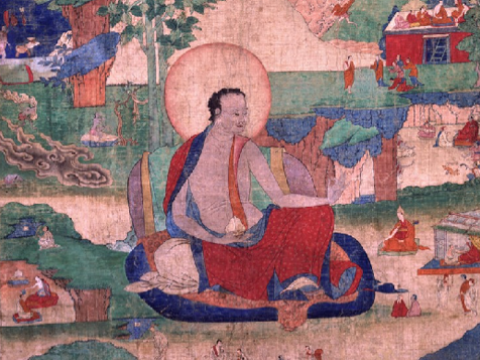Kyang, yang and ‘ang are the three ornamental and inclusive particles.
kyang is used after ga, da, ba, sa and da-drak,
yang after nga, na, ma, ra and la,
‘ang and yang are used after syllables ending in ‘a or without a suffix.
Chapter 3: Milarepa annihilates his enemies with black magic and hailstorms

In Chapter 3, Milarepa uses black magic and hailstones to destroy his Uncle's and Aunt's village. In this Unit, you will read the third chapter of this abridged life story while continuing to learn new grammatical constructions and expressions. You will memorize a traditional grammar verse about ornamental and inclusive particles, and practice word sequencing for some short Tibetan sentences.
When you’re ready to study Chapter Three, begin with 3.1 Grammar Preview and 3.2 Sentence Building. With those, you should be ready to try 3.3 Reading & Translation. You should also memorize the Tibetan grammar verse, review your grammar with 3.5 Sequencing Practice, and practice your pronunciation by following along with 3.6 Reading Aloud. Finally, in 3.7 you can watch the first part of a two-part video lecture by the Gyalwang Karmapa, speaking in New Delhi in 2014, about the significance of Milarepa's life story for Buddhist practitioners.
Reading & Translation from the Life of Milarepa
On the ornamental and inclusive particles
Rearrange the following words so that they make the phrase below in correct Tibetan word order. For help, press the Colors button to color words according to their grammatical categories, or the Hint button to show word glosses when hovering over a word.
When you are finished with an example, press Mark. If your answer is correct, then press Next to move on to the next example. If your answer is incorrect, then you may have to repeat the exercise one or more times. Press the Repeat button to do so. Note that this is just to give you more practice; repeat attempts will neither help nor hurt your score. When you have attempted an exercise as many times as allowed, then press Answer to see the answer.
